SAMPLING
Samples must be submitted fresh and should be collected and shipped no later than Tuesday using an overnight delivery service.
Try to collect samples that are representative of the range of symptoms and stages of disease observed in the field. Tissue must still be living to be used for testing, no senescing, dead or decayed material.
Select 5 leaves of green or living tissue closest to the symptoms, try to collect from different parts of the affected plant to account for any uneven distribution of the pathogen. If the leaves are quite small, include extra tissue to ensure there is sufficient volume for testing.
Keep tissue samples fresh but dry; ventilated bags (e.g., Fresh Produce Ziploc bags or perforated bags) work best to prolong sample freshness as they allow the sample to breathe. Do not use paper bags as the samples desiccate in shipment.
Avoid collecting samples in the rain; wet leaves shipped in airtight bags deteriorate rapidly and samples that have decayed in transit cannot be used for testing. If your samples have excess moisture, you can place a small piece of paper towel in each sample bag to help counteract overly damp conditions.
Use new Ziploc bags to collect your samples to avoid any cross-contamination of the sample. Do not mix different samples in the same submission bag.
Use a simple and consecutive numbering system to label your samples (e.g., #1, #2, #3, etc.). This reduces any confusion around identification of samples and the order that they should be tested in. Convoluted numbering systems that do not follow a consecutive order may delay the processing of your samples and lead to misidentification.
Label the sample number clearly and legibly on the bottom right corner of the bag with indelible marker to identify each separate sample. Record any additional sample information on the Sample Submission Form instead of on the sample bags, as the sample bags will be discarded during testing. You can also email us a copy of the Sample Submission Form, or a spreadsheet of sample submissions in advance of sample arrival to reduce any delays in sample processing time.
Organize your samples consecutively into groups of 10-20 bags (e.g., Samples #1-10, Samples #11-20, etc.) and secure them in order by using 1 staple or clip on the top left corner to secure each group. This ensures that the samples arrive in the order that they will be tested and can be processed without further delay. Please do not throw loose sample bags in random order into a box for shipping. Number and label your samples clearly and secure them in the order you would like them tested to ensure that all samples can be identified and accounted for accurately.
Include a Sample Submission Form with your samples. Please take the time to write clearly or type the information, you can also
email us a copy to let us know what samples will be arriving. If we cannot read it to identify the sample we cannot record or test it.
Note any information that may be pertinent to diagnosis such as a description of the symptoms, growth conditions, pesticide use, insect vectors that may be present, or anything else you think might be important. Record this information and any additional information, such as plant location, on the Sample Submission Form instead of on the sample bags, as the sample bags will be discarded during testing.
Pictures of observed symptoms can also be emailed. Provide a description of what the picture is depicting and ensure it is in focus and of sufficient quality.
If you are unable to ship your samples directly after collection, store them at 4°C, taking care not to freeze or expose them to heat.
The BC Blueberry Council and BCMAFF Industry Specialist Carolyn Teasdale have posted instructional videos on how to sample for virus testing and how to remove plants that test positive for Blueberry Scorch Virus (BlScV) here. Please note that the BCBC Sampling Program for BlScV and BlShV Testing is now closed for the 2025 season.
PACKING
Package and ship samples carefully to avoid deterioration in transit, making sure to limit the amount of moisture the sample is exposed to.
Protect against crushing, freezing or overheating by packaging your samples securely. Do not enclose an icepack with your samples, often it will cause degradation of the sample by either freezing or crushing the tissues in transit.
Include a Sample Submission Form that includes sample identification, collection date, the name and initial of the person who collected the sample, tests required and any pertinent information regarding the sample. Please write clearly or type the information.
SHIPPING
Use an overnight delivery service to maintain sample integrity, especially when shipping perishable samples that may be destroyed in transit by exposure to prolonged shipping time and extreme hot or cold temperatures.
Ship early in the week (no later than Tuesday) to avoid having perishable samples sit over weekends or holidays. Samples that do not arrive fresh and in good condition cannot be used for testing and will have to be resubmitted.
Contact us by phone or email to let us know your samples will be arriving to minimize any processing delays.
How to Take Blueberry Leaf Samples for BlScV & BlShV Testing:

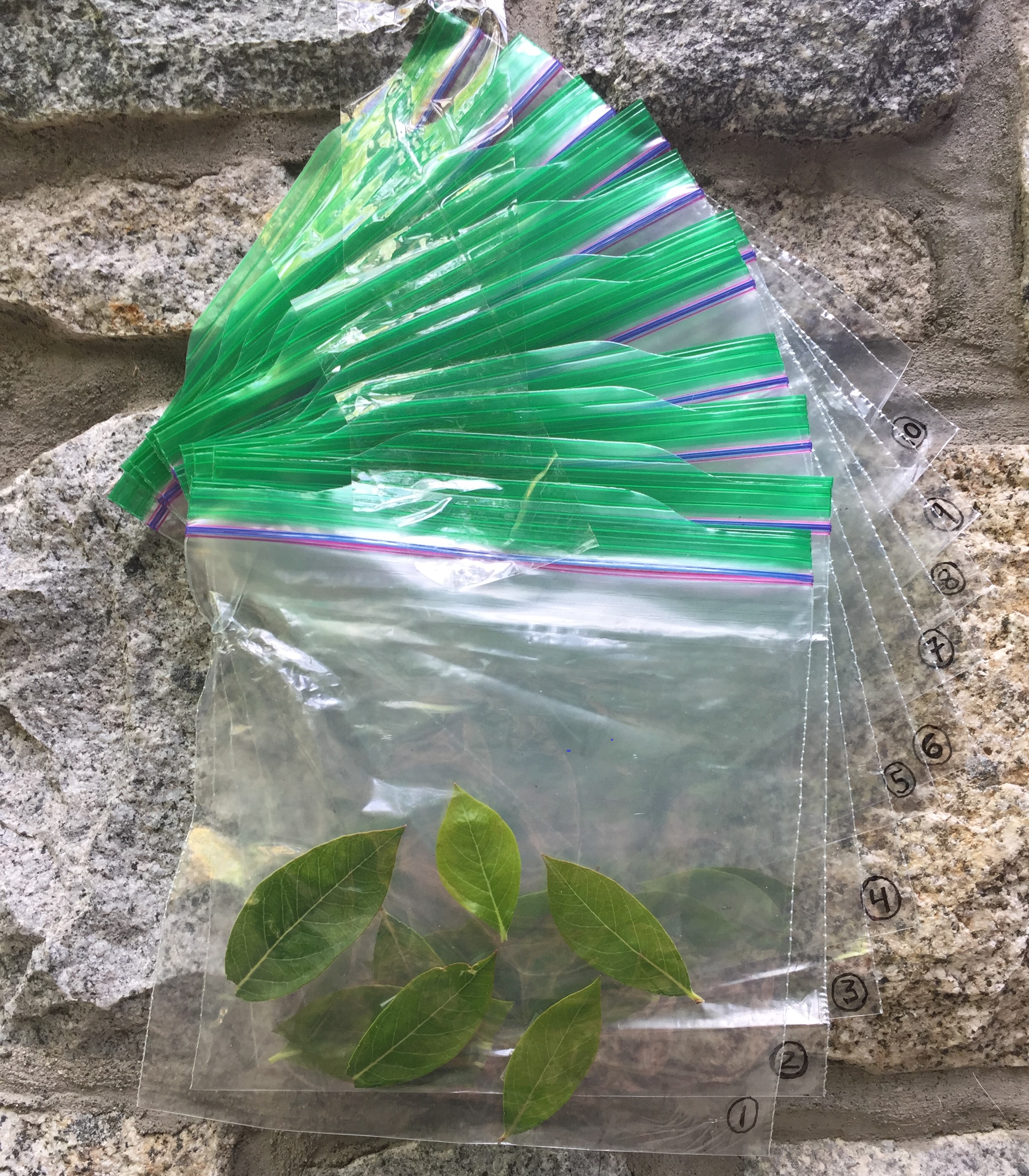
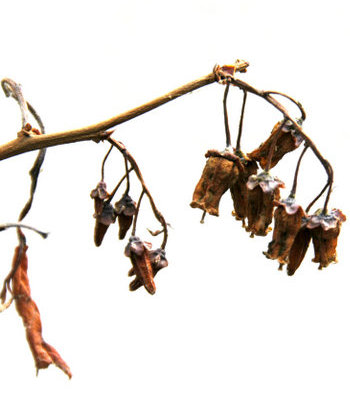
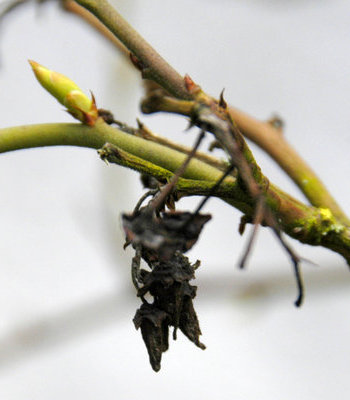
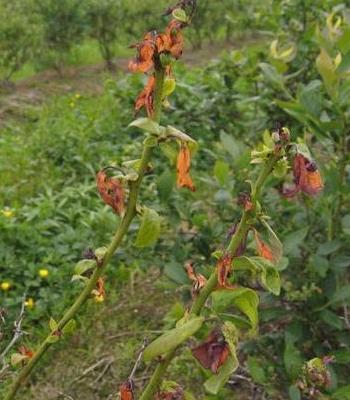
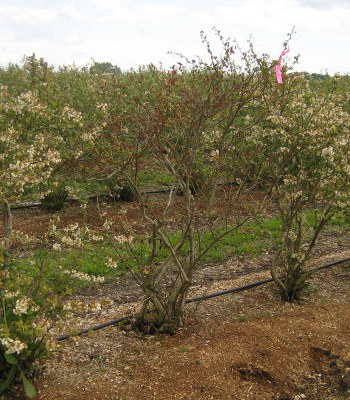
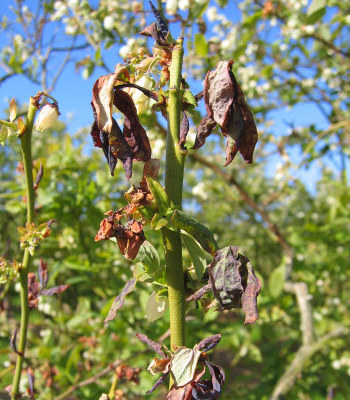
Phyto Diagnostics Company Ltd.
9381 Ardmore Drive
North Saanich
British Columbia, Canada
V8L 5G4
+250 655.1444
info@phytodiagnostics.com
© 2025 Phyto Diagnostics Company Ltd. All rights reserved.